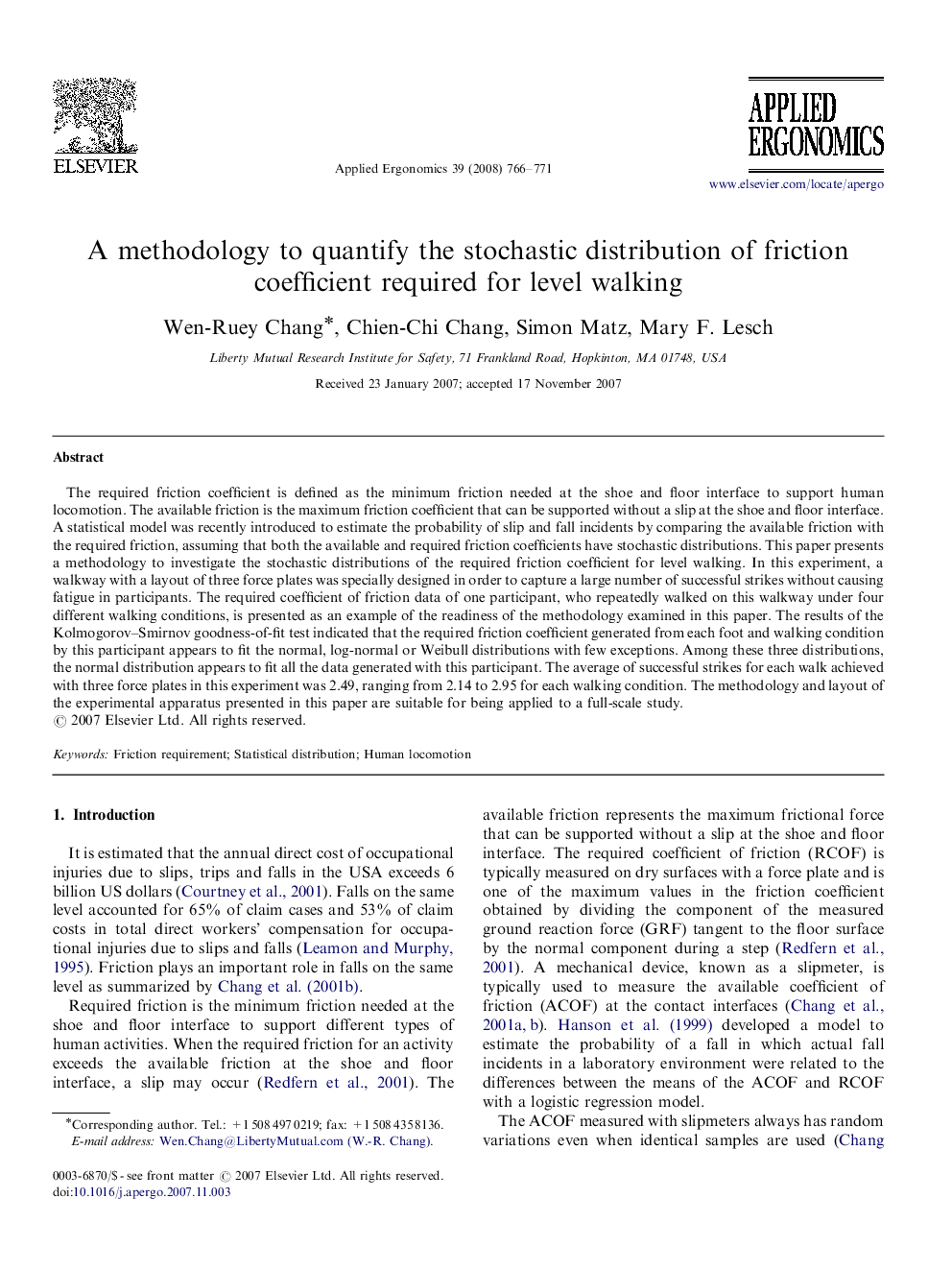| Article ID | Journal | Published Year | Pages | File Type |
|---|---|---|---|---|
| 549667 | Applied Ergonomics | 2008 | 6 Pages |
The required friction coefficient is defined as the minimum friction needed at the shoe and floor interface to support human locomotion. The available friction is the maximum friction coefficient that can be supported without a slip at the shoe and floor interface. A statistical model was recently introduced to estimate the probability of slip and fall incidents by comparing the available friction with the required friction, assuming that both the available and required friction coefficients have stochastic distributions. This paper presents a methodology to investigate the stochastic distributions of the required friction coefficient for level walking. In this experiment, a walkway with a layout of three force plates was specially designed in order to capture a large number of successful strikes without causing fatigue in participants. The required coefficient of friction data of one participant, who repeatedly walked on this walkway under four different walking conditions, is presented as an example of the readiness of the methodology examined in this paper. The results of the Kolmogorov–Smirnov goodness-of-fit test indicated that the required friction coefficient generated from each foot and walking condition by this participant appears to fit the normal, log-normal or Weibull distributions with few exceptions. Among these three distributions, the normal distribution appears to fit all the data generated with this participant. The average of successful strikes for each walk achieved with three force plates in this experiment was 2.49, ranging from 2.14 to 2.95 for each walking condition. The methodology and layout of the experimental apparatus presented in this paper are suitable for being applied to a full-scale study.
